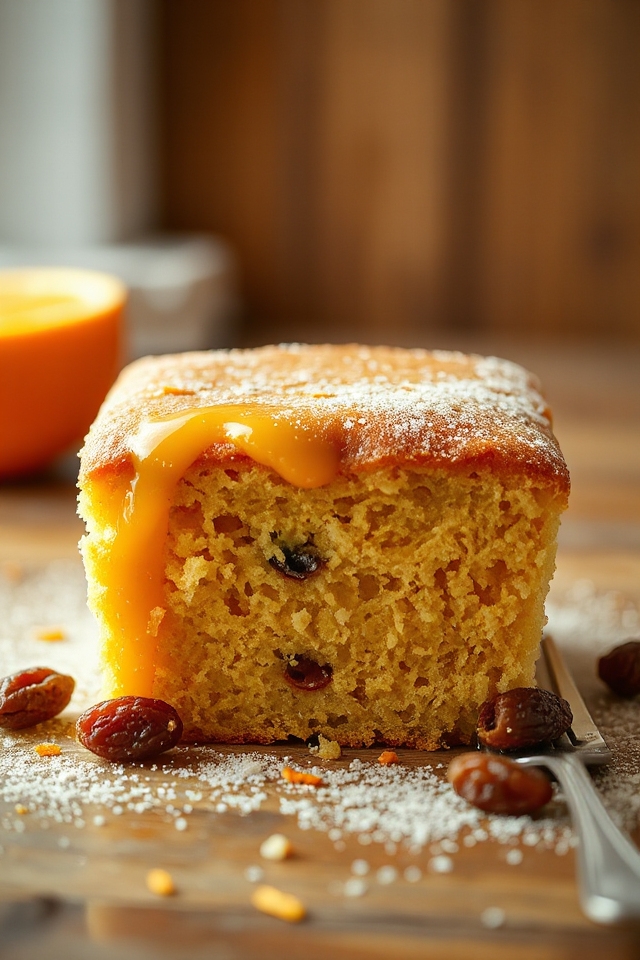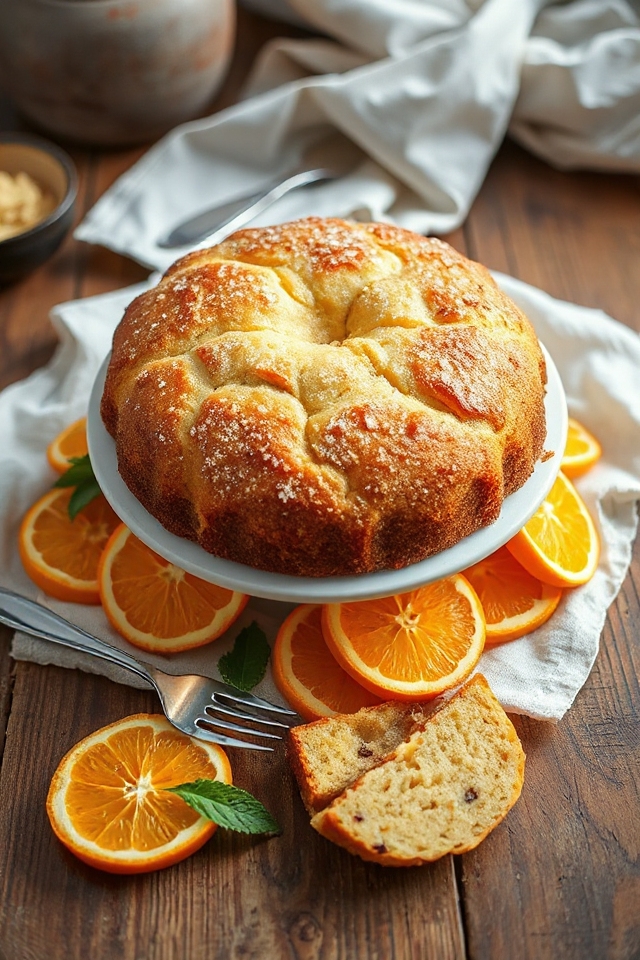Why You’ll Love This Orange Cake Recipe
If you’re looking for a delightful dessert that bursts with flavor, this orange cake recipe is a must-try.
I can’t get enough of its vibrant citrus taste and moist texture. Each bite feels like a sunny day, and the aroma while baking is simply irresistible.
What I love most is how easy it’s to make—perfect for both novice bakers and seasoned pros.
Plus, it’s versatile enough for any occasion, whether it’s a casual family dinner or a festive celebration.
Trust me, once you taste this cake, you’ll be hooked and want to share it with everyone you know!
Ingredients of Orange Cake
When it comes to baking an orange cake, the ingredients are what truly set the stage for that deliciously zesty flavor. This cake is a delightful blend of sweet and tangy, and the ingredients work together to create a moist, flavorful treat that you won’t soon forget.
Plus, gathering these ingredients is pretty straightforward, making it all the more approachable for bakers of all levels. So, let’s dive right into what you’ll need to whip up this citrusy delight.
Here’s your shopping list for the orange cake:
- 1 orange
- 1 cup raisins
- 2 cups flour
- 1 1/2 cups sugar (divided)
- 3/4 cup sour milk or buttermilk
- 2 eggs
- 1/2 cup butter or margarine (room temperature)
- 2 teaspoons lemon juice
- 1 teaspoon baking soda
- 1/4 teaspoon salt
Now, a couple of things to reflect on before you start mixing it all together. First off, using fresh ingredients can really elevate the cake—like a ripe orange that’s bursting with juice, or real butter that adds richness.
If you don’t have sour milk on hand, buttermilk is a fantastic substitute that adds a nice tang. And let’s not forget about those raisins; they not only add sweetness but also a lovely chewy texture. You might even want to soak them in warm water for a few minutes before adding them to the mix to plump them up.
Just a little tip from me to you—don’t skip the fresh orange juice drizzle on top; it adds a final touch of citrusy goodness that makes this cake truly shine. Happy baking!
How to Make Orange Cake

Making an orange cake is a delightful adventure, and I promise, it’s easier than you might think. First, let’s get that oven preheating to a cozy 350 degrees F. You’ll want to grease a 9×13 baking pan so your cake doesn’t stick and you don’t end up wrestling with it later. Trust me, nobody wants to play tug-of-war with a cake.
While that’s heating, grab your ingredients and let’s get mixing. Start by squeezing the juice from that bright, zesty orange—make sure to set the juice aside for later. Then, take the peel and rind, dice it up, and toss it into a food processor with 1 cup of raisins. Give it a good chop until it’s nicely blended. This combo brings a burst of flavor and a little surprise texture to your cake.
Now, transfer that mixture to a bowl, and to it, add 2 cups of flour, 1 cup of sugar (saving the other 1/2 cup for later), 3/4 cup of sour milk or buttermilk, 2 eggs, 1/2 cup of soft butter or margarine, 2 teaspoons of lemon juice, 1 teaspoon of baking soda, and 1/4 teaspoon of salt. Mix everything together until well combined—don’t worry if it’s a little lumpy; it’s all going to bake into deliciousness.
Once your batter is ready, pour it into that greased baking pan and slide it into the oven for about 40 to 45 minutes. Now, I know patience isn’t easy, but this is where the magic happens. You’ll want to keep an eye on it, and when a toothpick comes out clean, it’s time to take it out.
Here comes the best part—immediately pour the fresh orange juice over the top and sprinkle with the remaining 1/2 cup of sugar. Just imagine that sweetness mingling with the tangy juice, soaking into the cake. It’s a little like giving the cake a revitalizing citrusy shower.
Let it cool, slice it up, and enjoy a slice of sunshine. You’ve just made a cake that not only tastes incredible but also smells heavenly. So, grab a plate and dig in. You deserve it.
Orange Cake Substitutions & Variations
Whether you’re looking to switch things up or accommodate dietary needs, there are plenty of substitutions and variations for the classic orange cake that can still deliver delightful flavor.
You can easily swap out all-purpose flour for gluten-free flour or use applesauce instead of butter for a lighter option. If you’re dairy-free, almond or oat milk works beautifully in place of buttermilk.
For added zest, try incorporating lemon or lime juice along with the orange. You might even experiment by adding nuts or chocolate chips for texture.
Each variation can bring a unique twist to this delicious cake!
What to Serve with Orange Cake
To elevate your orange cake experience, consider pairing it with complementary flavors and textures.
I love serving it with a dollop of whipped cream or a scoop of vanilla ice cream, as the creaminess balances the cake’s citrusy zing. A light drizzle of chocolate sauce adds a delightful contrast, too.
For an invigorating touch, I often slice up fresh oranges or berries to accompany each slice. If you’re feeling adventurous, a sprinkle of toasted coconut can add an unexpected crunch.
Each of these pairings enhances the orange cake, making every bite a delicious delight. Enjoy experimenting!
Additional Tips & Notes
While baking an orange cake, I’ve discovered a few tips that can really enhance the final product.
First, using fresh oranges makes a big difference in flavor; the zest adds a lovely aroma.
Also, make sure your butter is at room temperature for a smoother batter.
If you want a moister cake, consider adding a bit more buttermilk.
I’ve found that letting the cake cool slightly before pouring the orange juice on top allows it to soak in better.
Finally, don’t skip the sugar sprinkle—it adds a delightful crunch and sweetness.
Enjoy your baking experience!
